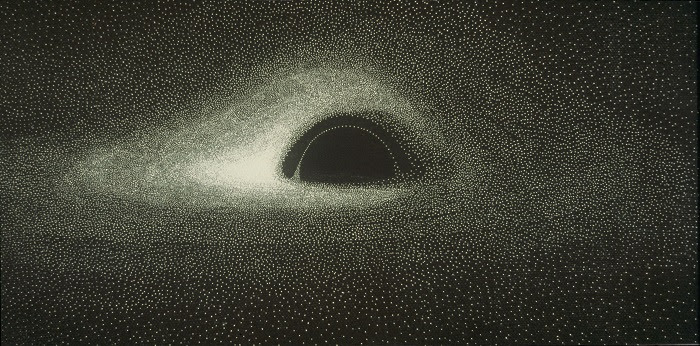It was not an artist's view but an image based on the then supposed physical properties of a black hole and its gas disc, such as its rotation rate and temperature, and on Einstein's general theory of relativity.
Luminet envisioned it as a black circle, which had not yet become known as the shadow of the black hole, in the center of a luminous accretion disc, with one side clearly brighter than the other. This is because there are two effects that should shift the radiation that reaches us from the disc: the Einstein effect, in which the gravitational field reduces its frequency and decreases its intensity, and the Doppler effect, in which the displacement of the source in relation to the observer produces an increase in frequency when the source approaches and a decrease when it moves away.

The simulation of a black hole published in 1979 © Jean-Pierre Luminet
This is an effect caused by the rotation of the accretion disc around the black hole.
These are all characteristics that can be found in the real image obtained forty years later by the EHT, which shows just how accurate this first simulation was.
Today, Luminet is a CNRS Emeritus Senior Researcher at the Laboratoire d'Astrophysique de Marseille (CNRS/CNES/Aix-Marseille Université).
Citation: Jean-Pierre Luminet, “Image of a Spherical Black Hole with Thin Accretion Disk,” Astronomy and Astrophysics 75 (1979): 228–35






Comments